Joshiraku 03 – notes and the like This entry was posted by Vale.
Delayed by my exams, here comes Joshiraku episode 3. (As I still have exams next week, expect episode 4 to be likewise late.)
Now that we’re at it, let’s talk about the opening.
This scene is from the first page of the manga’s second volume. They’re eating soba noodles.
That’s most probably a Type 61 tank.
The attacking rabbit shows up in chapter 14 of the manga. The Tokyo Tower and the Sky Tree can be seen in the background.
Cats! They play with cats in chapter 9 of the manga.
Hi there K-On!, how’s it flying?
The way Tetora is moving Kukuru is from chapter 5 of the manga.
I’m sure you remember Evil Gankyou from episode one.
We’ve seen Pissed Kigu before too.
Just watch this episode to get this reference.
My google-fu failed me here, I couldn’t figure out which rakugo she’s performing.
The magazine she’s reading is a parody of Hanako, which features the Ebisu-Daikanyama-Nakameguro areas (also parodied on the cover) quite often. The “Destroyed music that pops uselessly” also shows up on the Railgun OVA’s ad back from 2010. I haven’t watched Index or Railgun yet, but looking around I spotted a bunch of screenshots featuring the same magazine in the show.
They’re talking about Ebizou (海老蔵). Ebizou is a stage name used by the actors of the famous Ichikawa kabuki clan. The London Telegraph went so far as to call him the Japanese Brad Pitt. In addition to being a famous actor, he’s also got some notoriety from a 2010 bar brawl incident. When the girls say his name, an elephant’s trumpeting covers out the “zou”. This makes the original word obvious, since in Japanese “elephant” is 象 (zou).
The girls are shocked because in Japan girls give chocolate to boys on Valentine’s (not vice versa).
I’m lucky enough that “S” has a relevant meaning for contemporary people as well. In the (Taisho and Showa era) Japanese girls’ highs there was always a queen, the subject of all other girl’s affection. S stands not for sadist as nowadays, but “sister” – as in lesbian love.
While 男の子 (otoko no ko) would normally just mean “boy”, the way she says ko it’s obvious that she considers it with the feminine kanji 娘 and not the gender-neutral 子.
Don’t try this at home. I seriously mean it.
This is a reference to Time Bokan, where the narrator uses a similar phrase all the time.
I wonder what are they drinking. As seen later, Kigu at least is underage.
Shinbashi is an office district, so there are quite a bunch of corporate slaves with lots of regrets.
Maman? Are you Fleur from E7 or what?
This is a reference to The Rose of Versailles, an old shoujo manga. The main character (Marii’s previous life) is actually a girl, just she was raised as a man. How fitting.
The epitome of manliness in Japanese is described as 飲む打つ買う (nomu-utsu-kau): drink, gamble (throw) and whore (buy pleasure). The girls here reverse this to eat, gather and sell.
Thank koda for this wonderful line.
You realize she’s walking pigeon-toed?
He’s the founder of Panasonic.
I’m not sure if she’s trying to pun here… Or it’s really just random.
For most of its history, a chemical extracted from a bug was used to make the Campari bitter red.
In Japanese the Arch of Triumph is actually the Gate of Triumph (凱旋門 gaisenmon). Also, hi there Germans (you might know the music playing during the school gate scene too).
The smoke will fix your shortcomings.
These discussions about kanji reading can’t be translated any more than this. The words in question:
- 浅草寺 (sensou-ji) – 浅草 (asakusa)
- 雷門 (kaminari-mon, the on reading would be raimon)
- 秋葉原 (akihabara or formerly akibahara)
- 吉祥寺 (kichijou-ji) – 吉祥 (kisshou)
- 国分寺 (kokubun-ji) – 国分 (kokubu)
By the way, when I lived in Tokyo, it was about halfway between Kichijouji and Kokubunji. Brings back memories.
I translated this, but I guess it was too much of an effort to typeset. These fortunetelling cards have Chinese poem-like things on them. Here you go:
霧罩重樓屋 World shrouded in darkness, like the fog shrouding a mansion.
佳人水上行 Alone and frail, like a weak woman in a boat on the stormy sea.
白雲帰去路 The wind of life only knows what the tomorrow may bring.
不見月波澄 Storms in the world are raised by the wind of hearts.
At the Sensou temple there’s no “great misfortune” card. She must really have hell of a bad luck to get something that doesn’t even exist. Anyway, the writing:
作事不和同 No matter the effort, understanding never comes.
臨危更主凶 The devil never walks alone.
佳人生苦根 Even the strongest stick breaks under the frail man.
閑慮両三重 At times all efforts are in vain.
Kigu’s drinking orange juice.
ご本尊 (go-honzon), the main subject of worship at a temple.
This is a horrible pun. In the background that golden object is the monument in front of the Asahi Super Dry building, and since it looks like a piece of golden shit (quite literally), people call the building うんこビル (unko-biru, crap tower). The pun is that she asked Tetora to give her luck (運 un). What a fantastic pun. (The monument was originally meant to stand vertically as a flame, but as it’s Japan, they didn’t get permission to make a flame monument.)
Useful Japanese vocabulary #712: 陰菌 or 陰金 (inkin), crotch rot.
A children’s song. The lyrics go…
雪やこんこ 霰やこんこ。 First falls the snow, snow. Then comes the hail, hail.
降つては降つては ずんずん積る。 The more it falls, falls, the more it piles, piles.
The girls’ uniforms and the train scene too are the same as in Ano Natsu de Matteru.
If you get a tea stem floating like that in your tea, know that it’s a good omen.
500 yen bills are an unbelievable rarity. (They got them from the 大入袋 ooirifukuro showed a flash earlier.)
That’s Hammerin’ Harry for you. (And now complain about localizing…)
In the Kanto area channel 10 of the analog broadcast was TV Asahi. That’s probably their Attack 25 quiz show. Analog broadcast’s ended not so long ago everywhere (this is very relevant).
地デジカ (chidejika), chideji (abbreviation of digital terrestrial broadcast) + 鹿 (shika, deer) and アナログマ (anaroguma), anarogu (analog) + 熊 (kuma, bear). Both are mascot characters, the former official (see link for relevant picture of the mascot), the latter by 2ch.
See the link above for a picture of the deer’s yellow swimsuit (though officially it’s not a swimsuit). The undressing part refers to Kusanagi Gou’s (草彅剛) obscenity scandal. He was the frontman of promoting digital broadcast, that’s the connection.
To be honest, I really like swearing the British way, and her name made this the perfect chance.
The point is that she’s the last in line. Also, a great song.
The real guy writes his name as 敏宏 (not 敏広). He’s the editor for the SZS and Joshiraku manga, and also responsible for Ah, My Goddess!, Rabuyan and Shingeki no Kyojin (look them up), referenced in the sign.
So apparently there were a few new names in episode two as well… I had not noticed. Anyway, they show up on this screen again, so have them.
- 狗亭亭怒個藻 (inuteitei dokomo): NTT Docomo, a Japanese cell phone provider.
- 雨似亭愚頭 (amenitei guzu): amenity goods
- 空亭舞台 (kuutei butai): 空挺部隊, airborne troops.
- 井伊亭豪放矛 (iitei gouhoumu): ET go home.
- 雪雪亭晋郡 (yukiyukitei shingun): ゆきゆきて、神軍 is an 1987 documentary.
- 滝他亭碁犯 (takitatei gohan): 炊き立てご飯, steamed rice.
- 沖亭矢舞李 (okitei yaburi): 掟破り, lawbreaking.
- 笑亭井々共 (warate iitomo): 笑っていいとも, laughing’s good.
- 儀瑠亭蔵雲 (girutei kuraun): Guilty Crown.
- 放籠亭鯛夢 (houkagotei taimu): 放課後ティータイム, Afterschool Teatime (from K-On!).
- 球亭羽煮異 (kyuutei hanii): Cutie Honey.
- 帆布亭団布亭 (hanputei danputei): Humpty Dumpty.
- 首相官亭乃堕 (shushoukantei noda): 首相官邸野田, incumbent president Noda.
- 特二式内火亭加巳 (tokunishikinaikatei kami): 特二式内火艇カミ was an amphibious tank used by the Imperial Japanese Navy.
- 料亭尾価味 (ryoutei okami): 料亭女将, mistress of a restaurant.
If you know of any more, don’t hesitate to tell me.
The original sign says 江戸ザイル (edo-zairu), literally Edo Rope, but probably a reference to the all-men music-dance group Exile (エグザイル eguzairu).
The “imported” part is very relevant. (Don’t read on until you watched the scene to the end.) There was a scandal when Chinese watermelons exploded (due to too much growth- and sweetness-improving chemicals).
I really love it how a bonsai, a blossoming cherry tree and the Fuji show up in sequence matching the syllables for 日本人 (nipponjin, Japanese people).
Her formal/polite speech is amazing. (Episode 4 coming once my exams are over.)

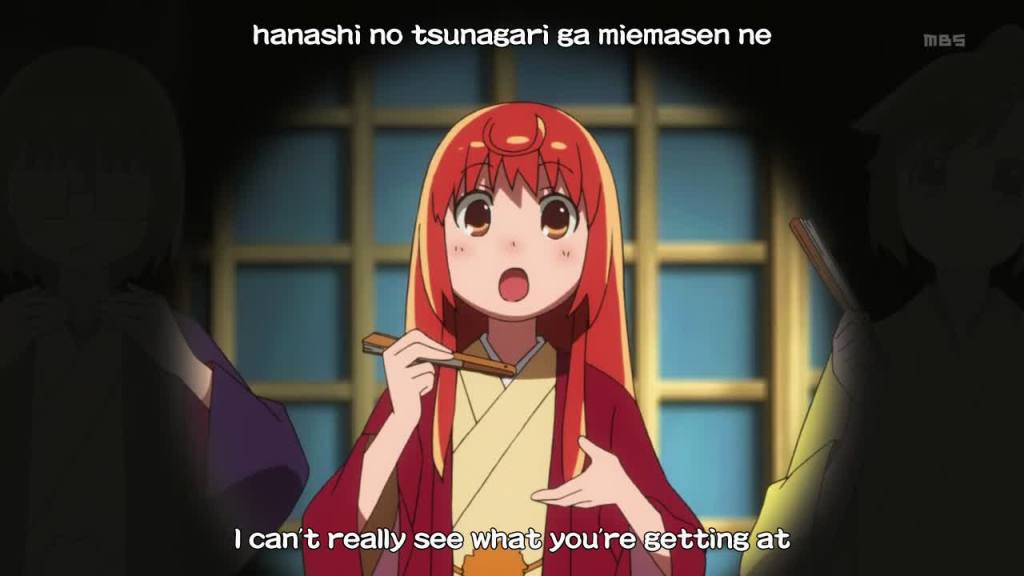
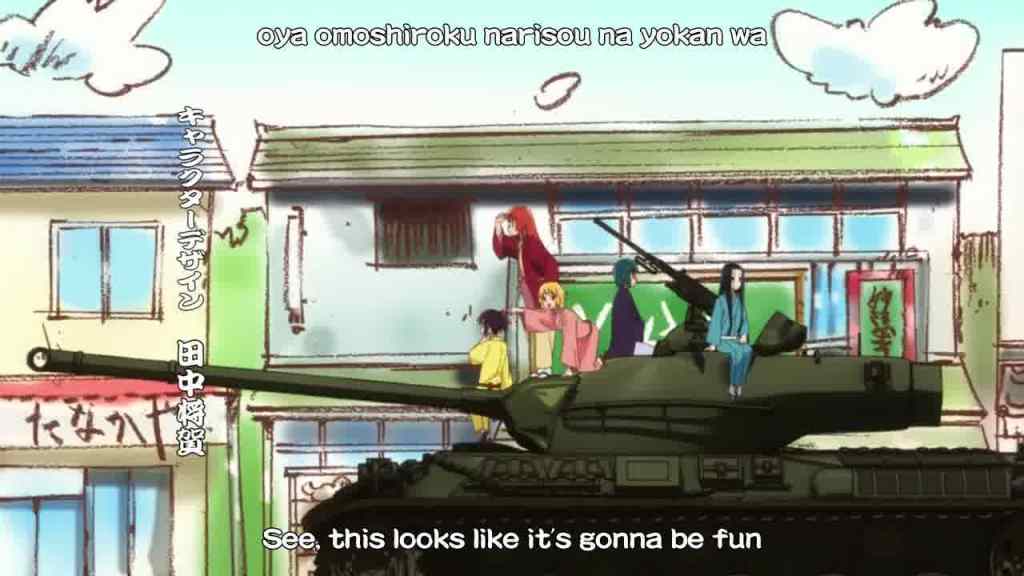
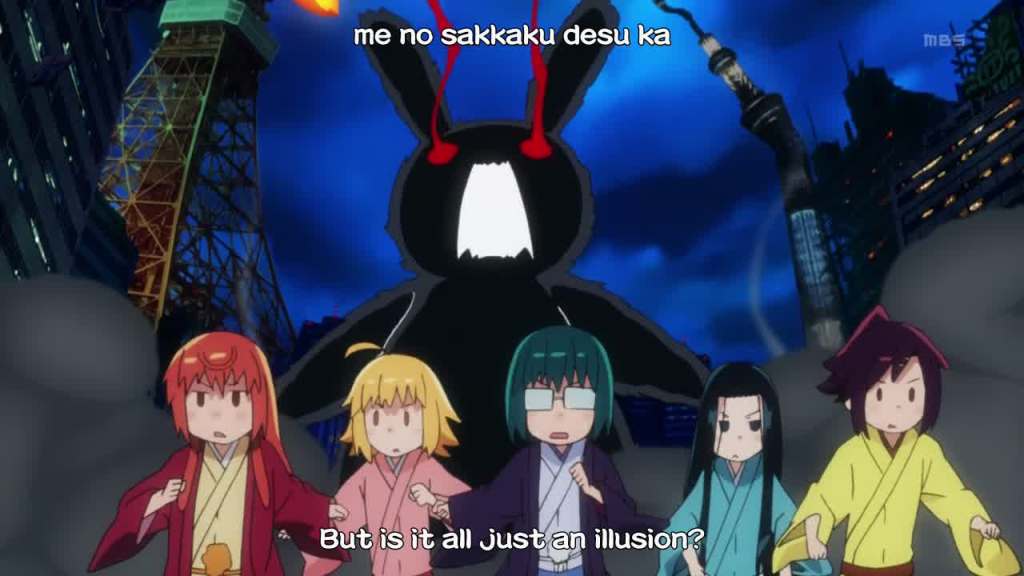
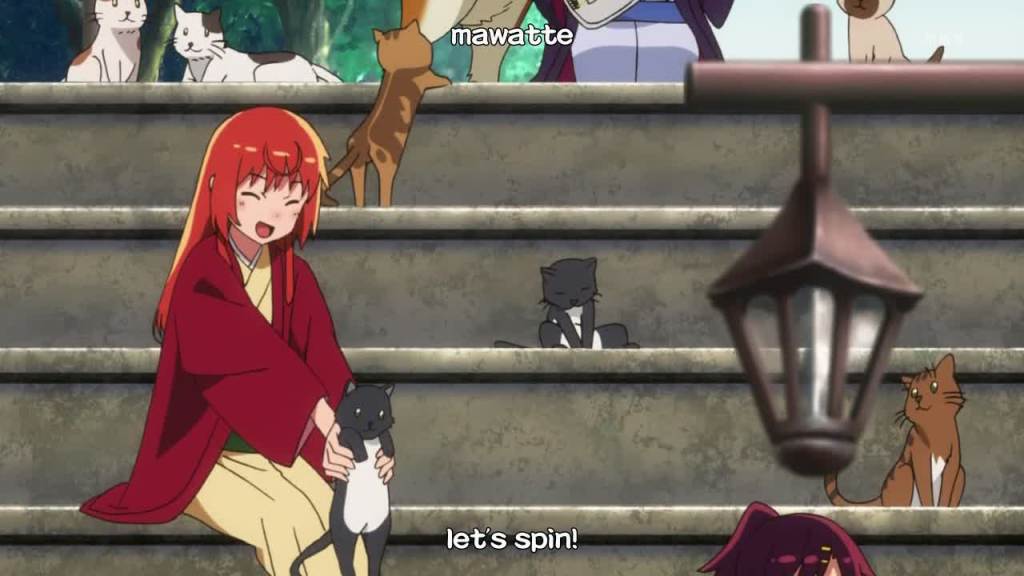
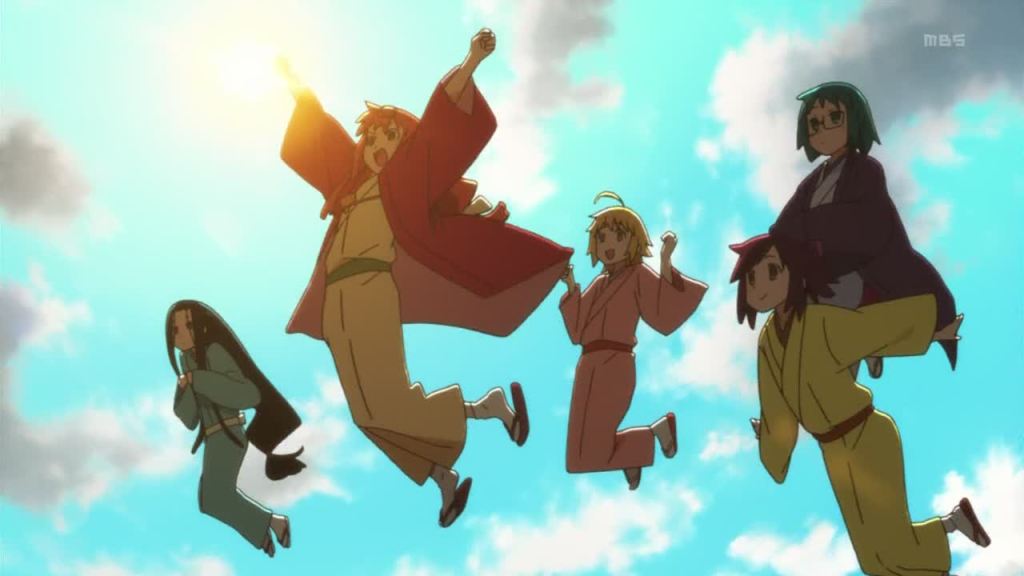
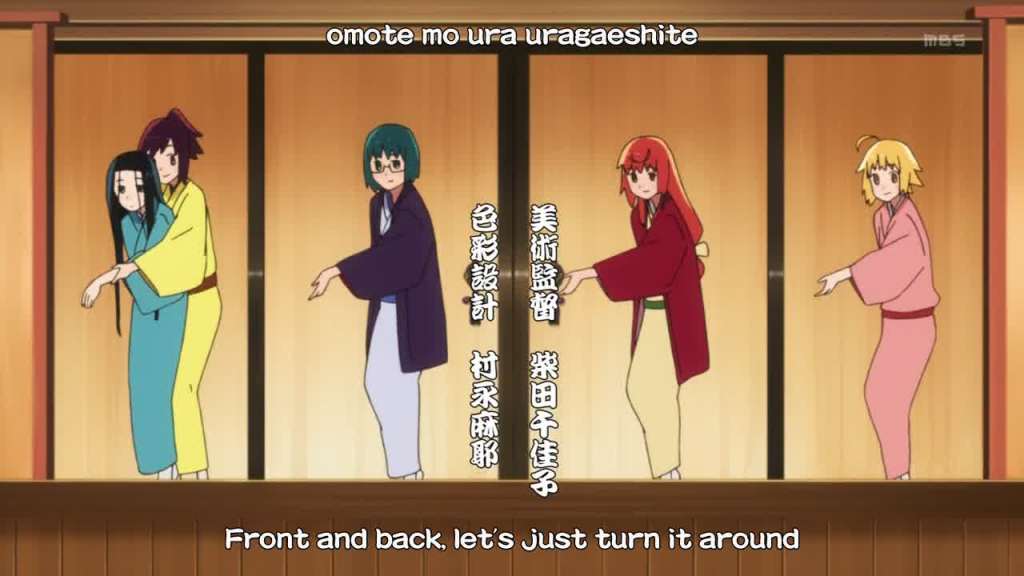

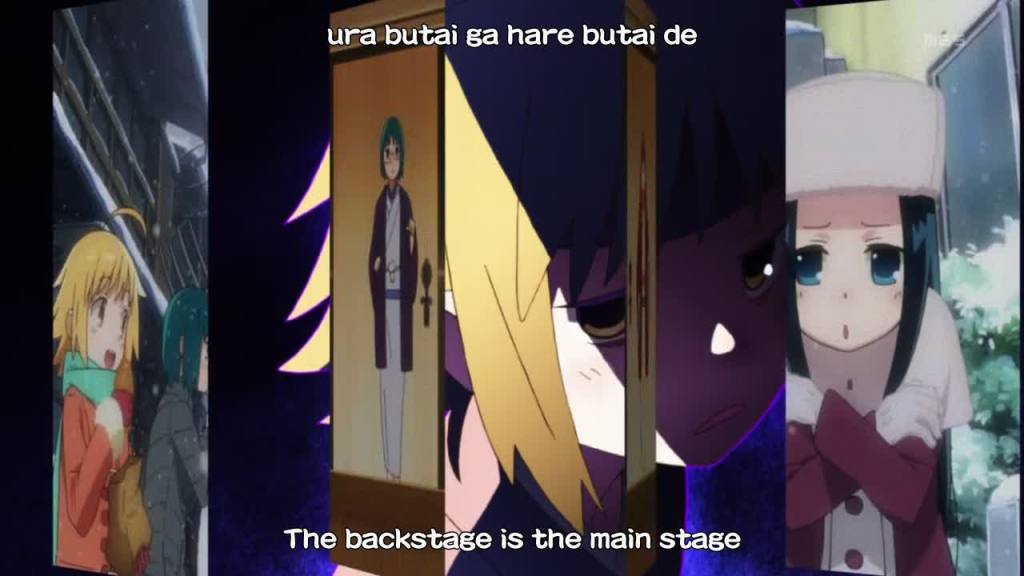

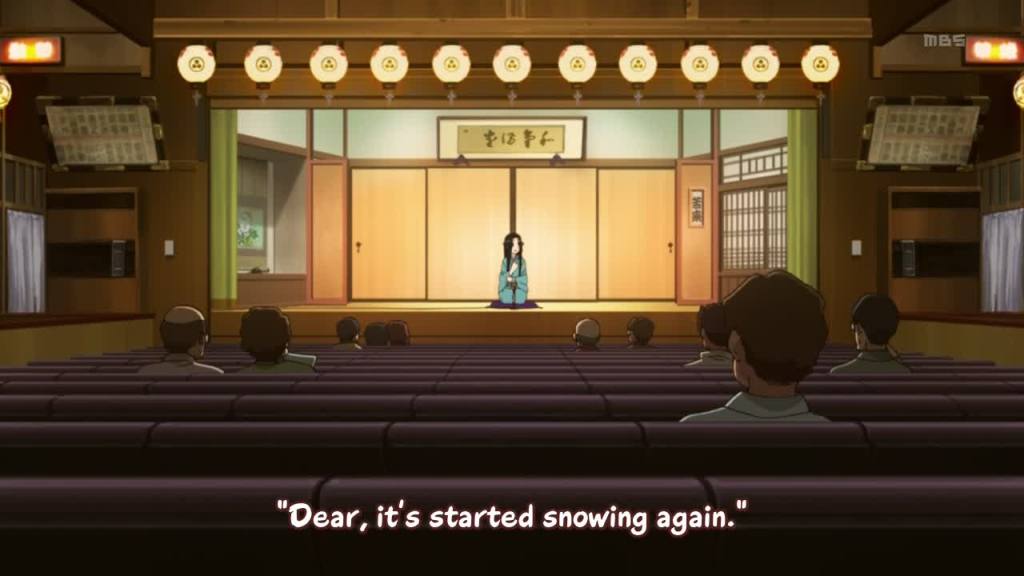
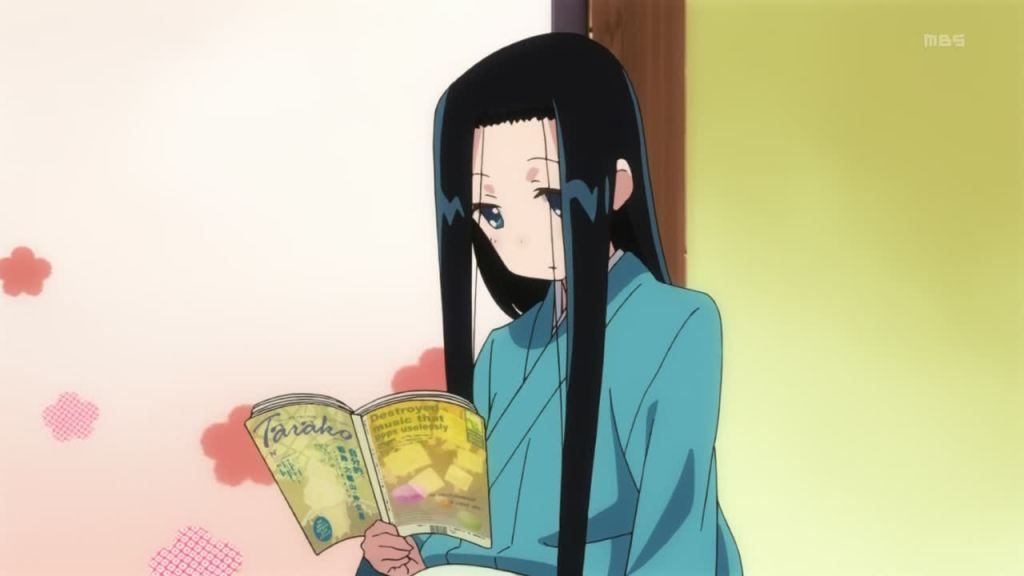
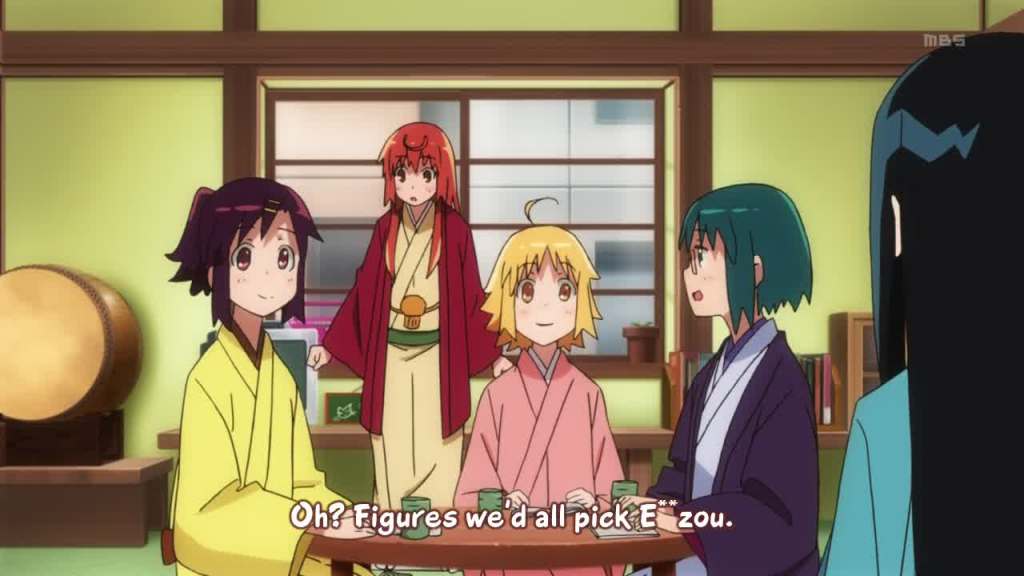
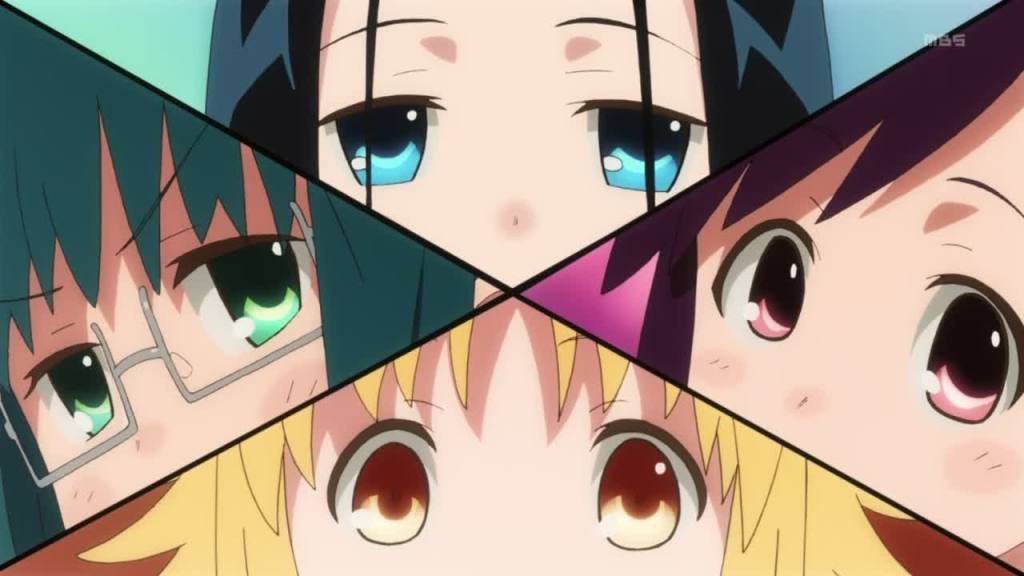
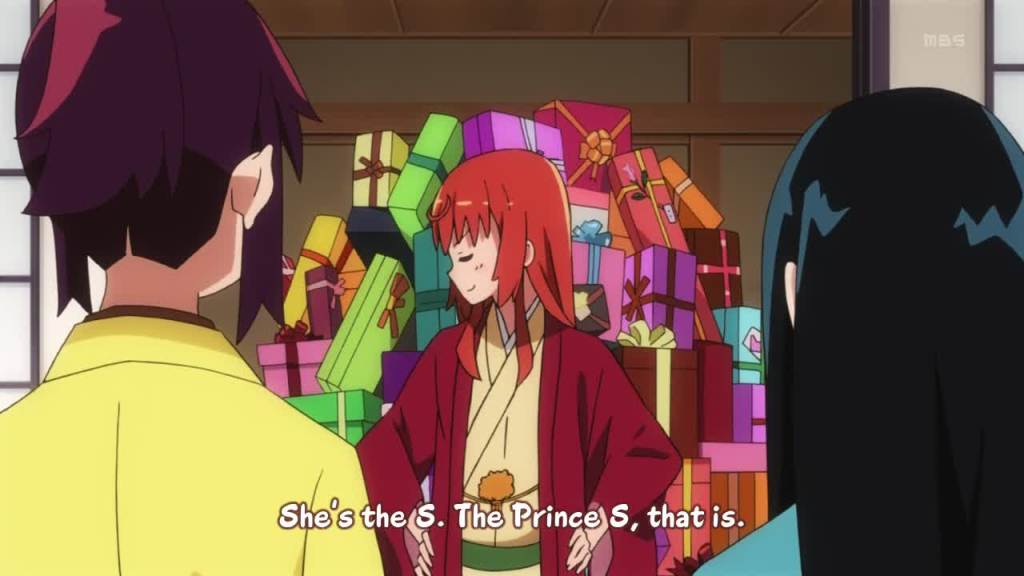
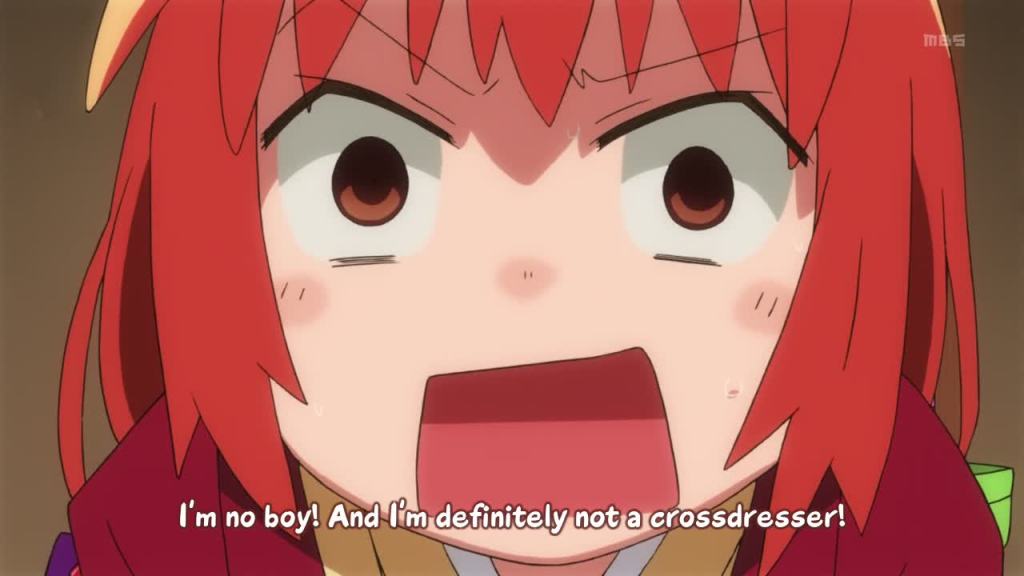
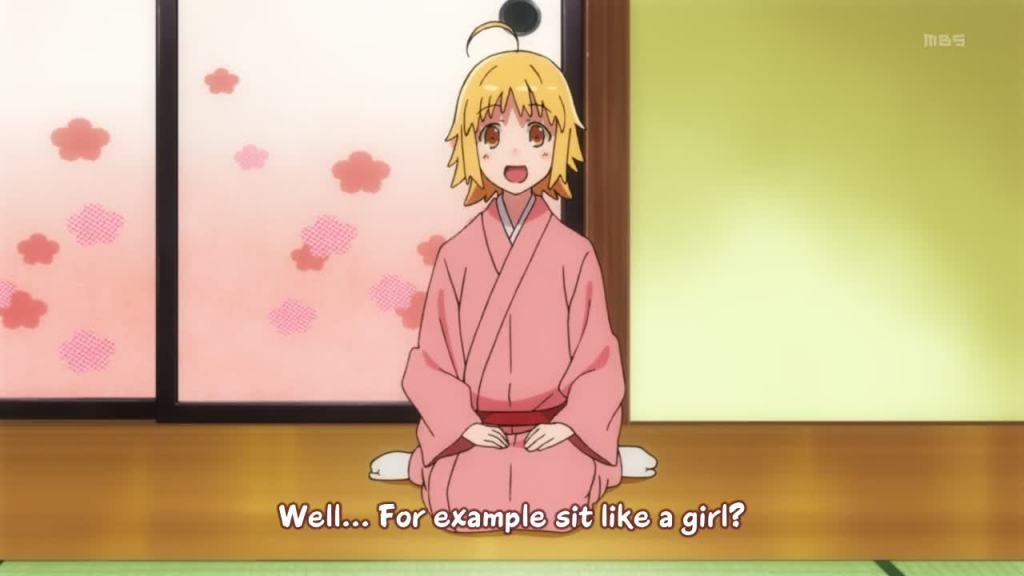
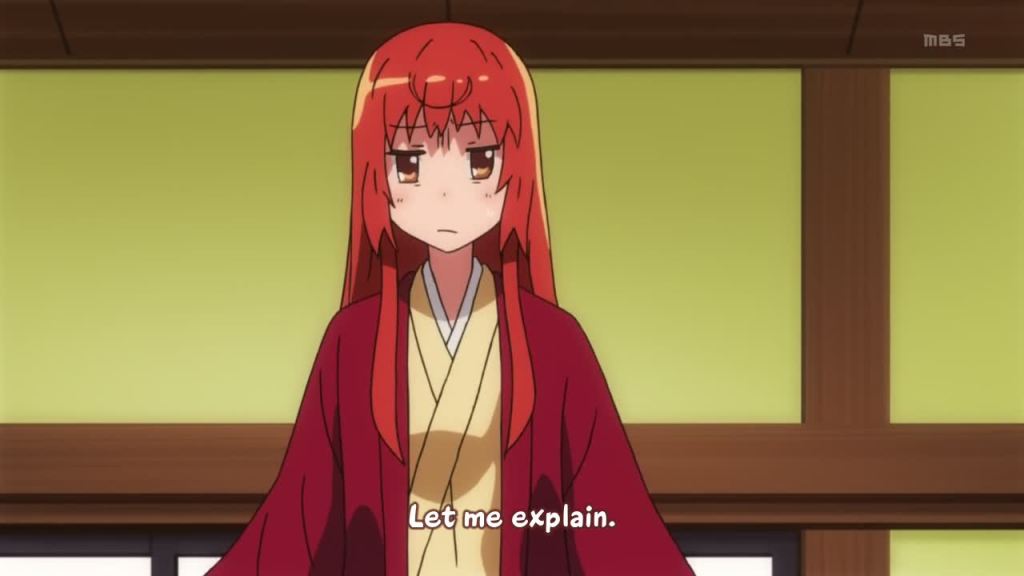
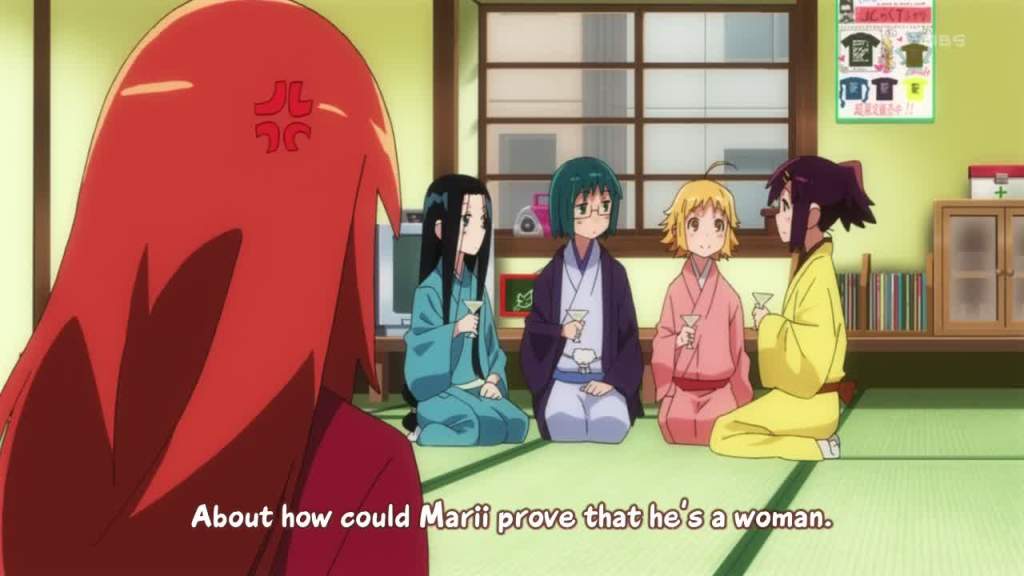
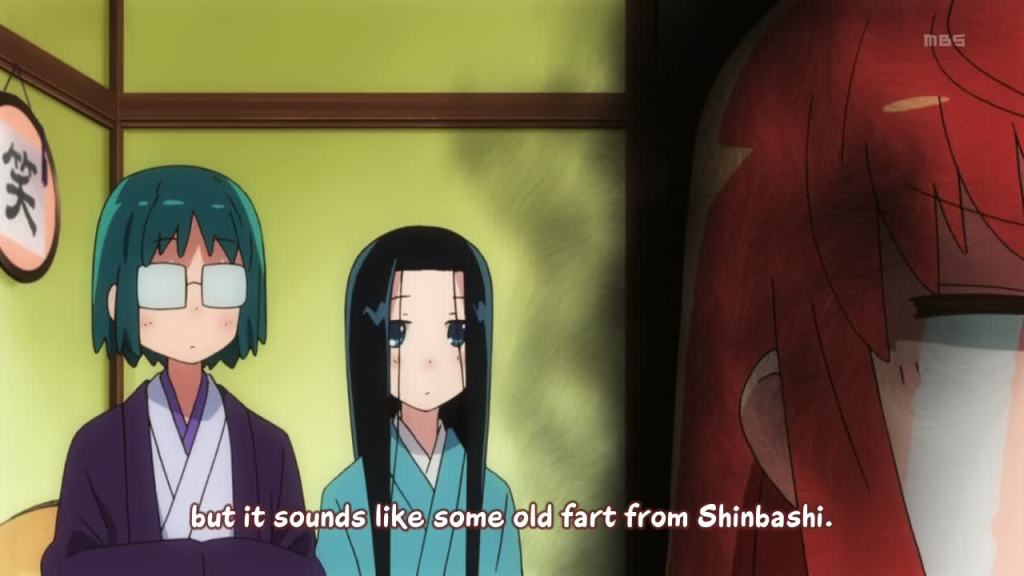
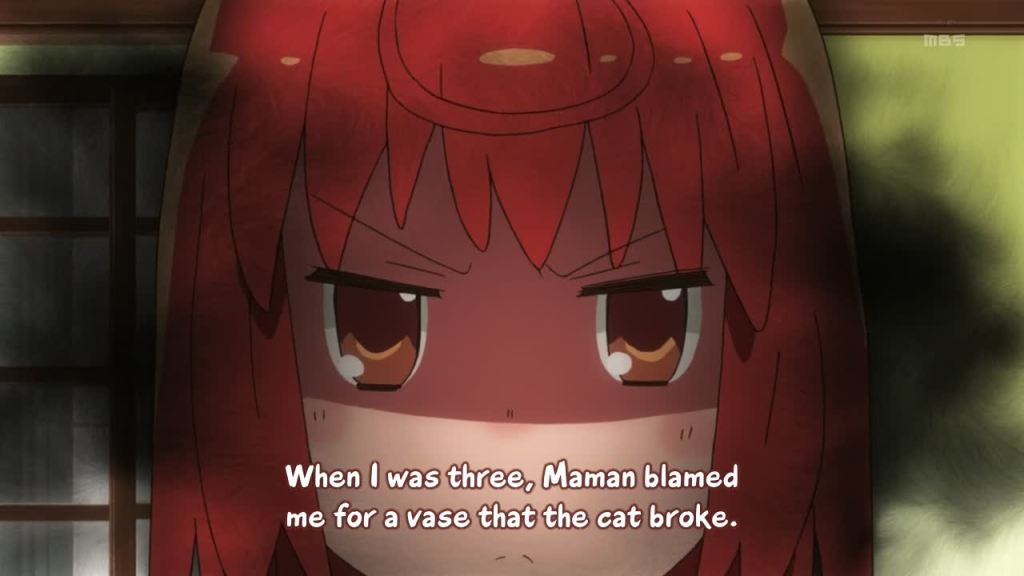
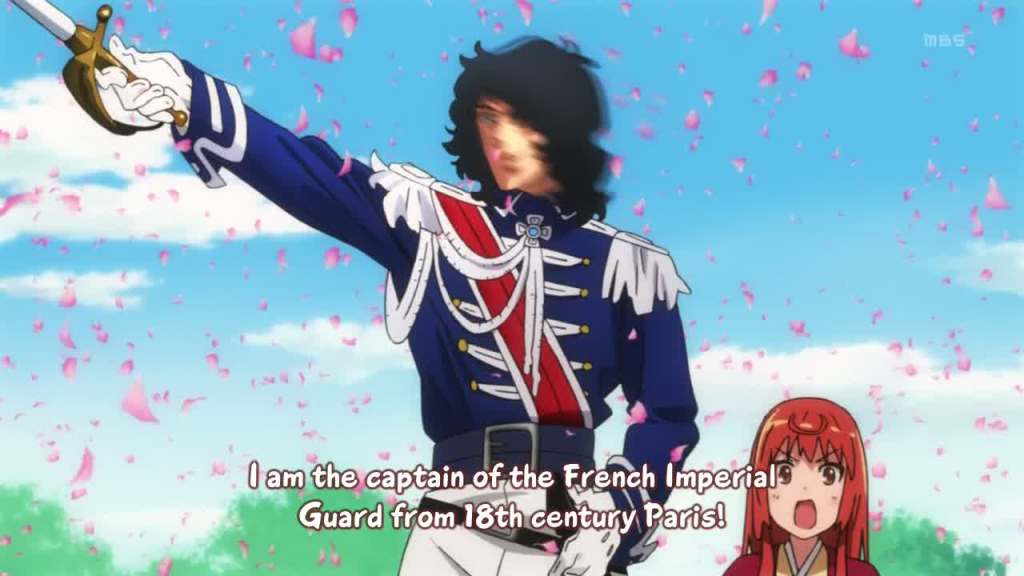


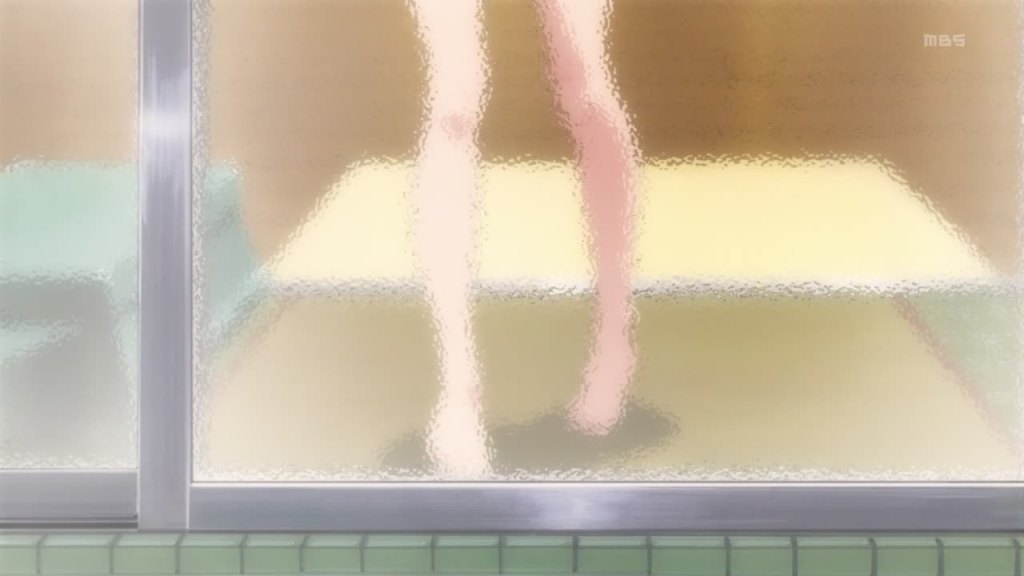
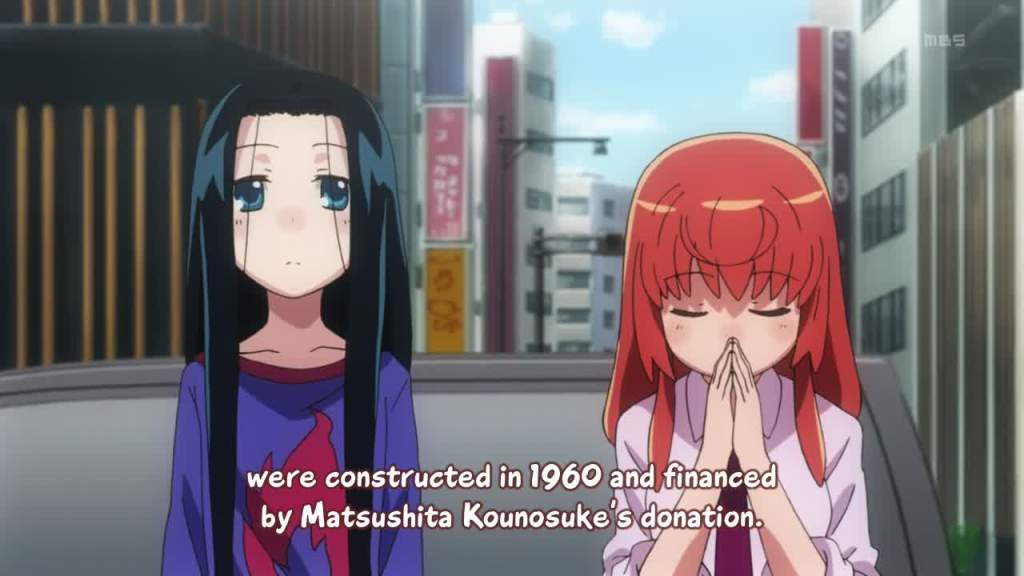
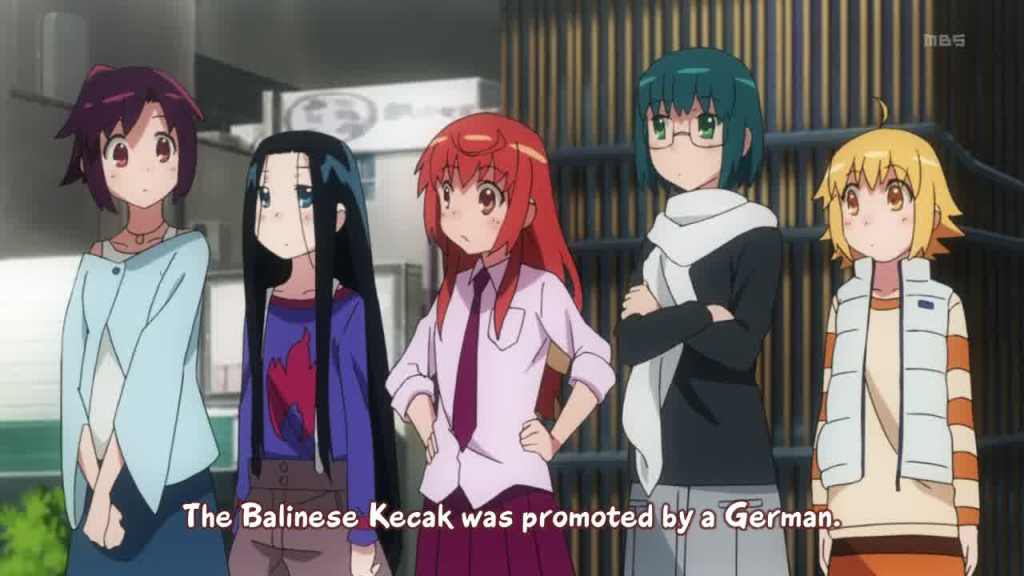
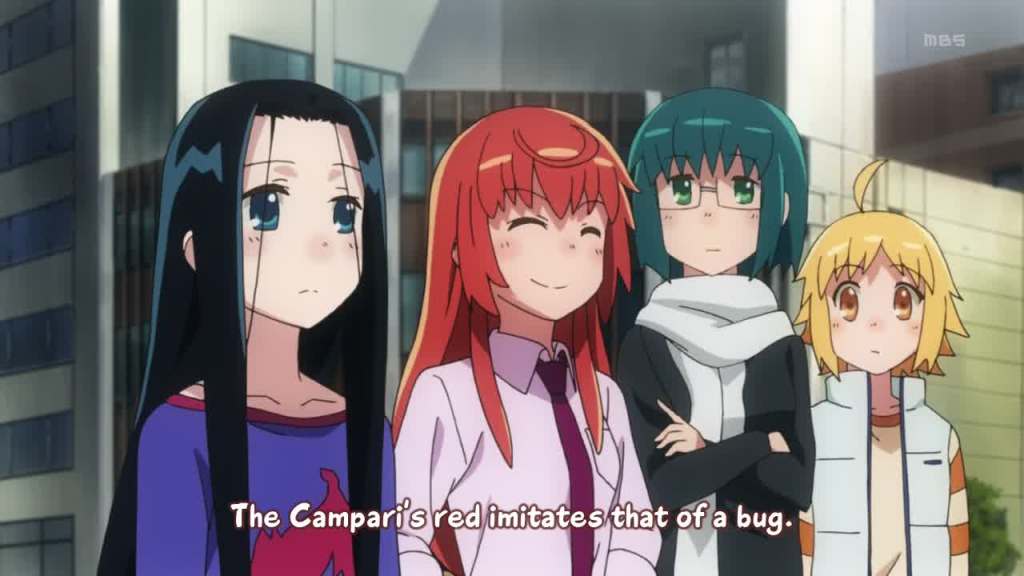
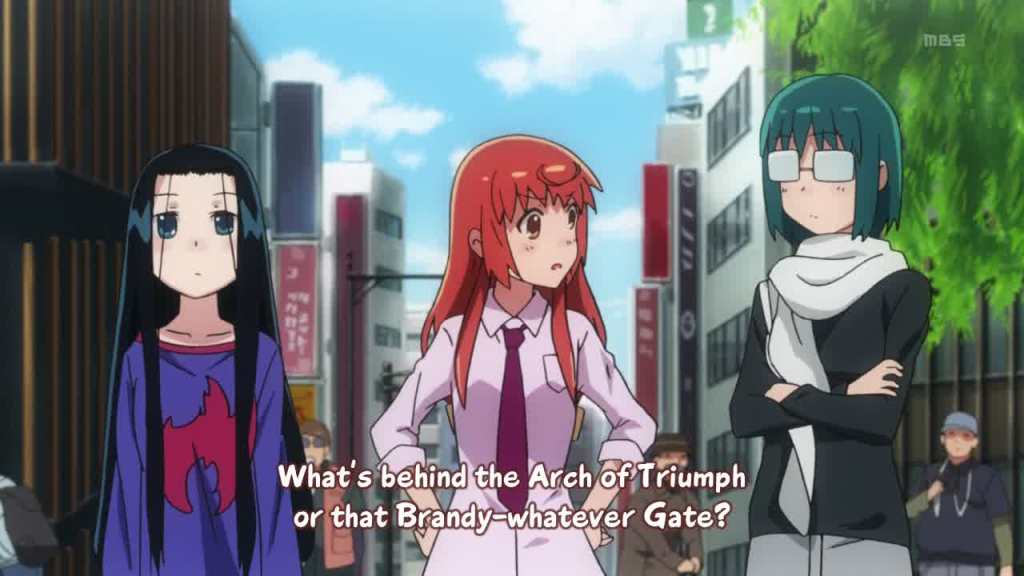
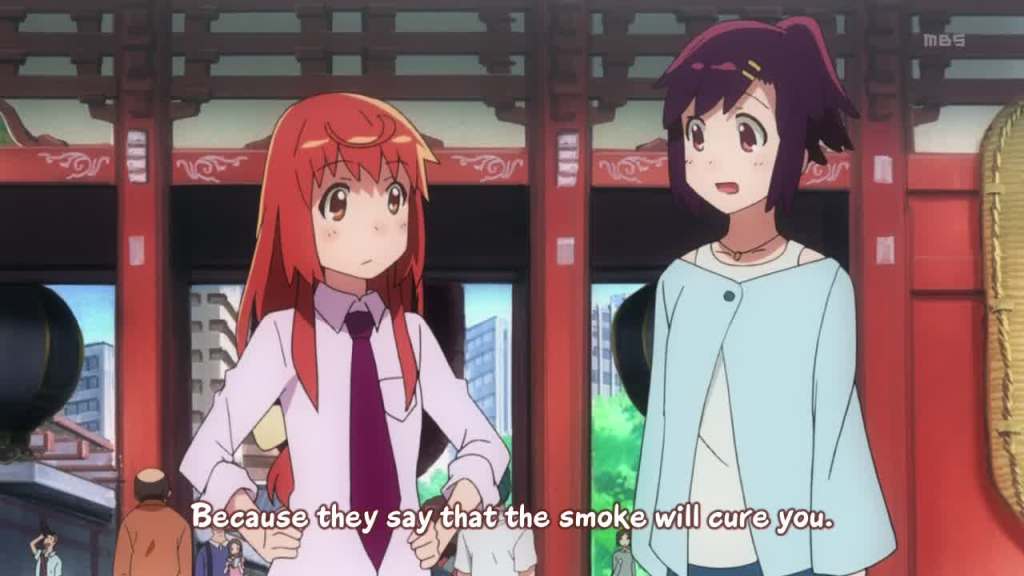
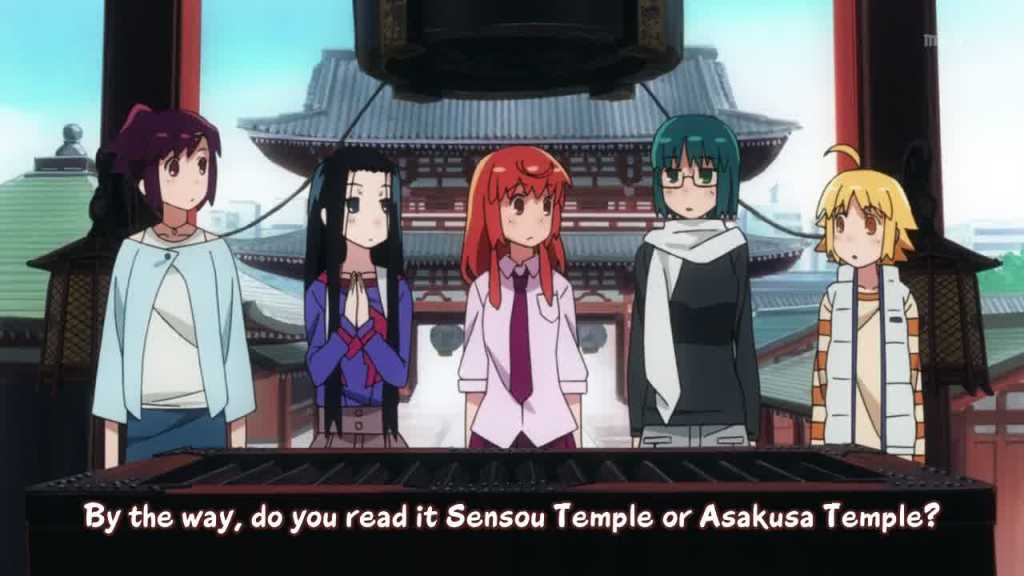

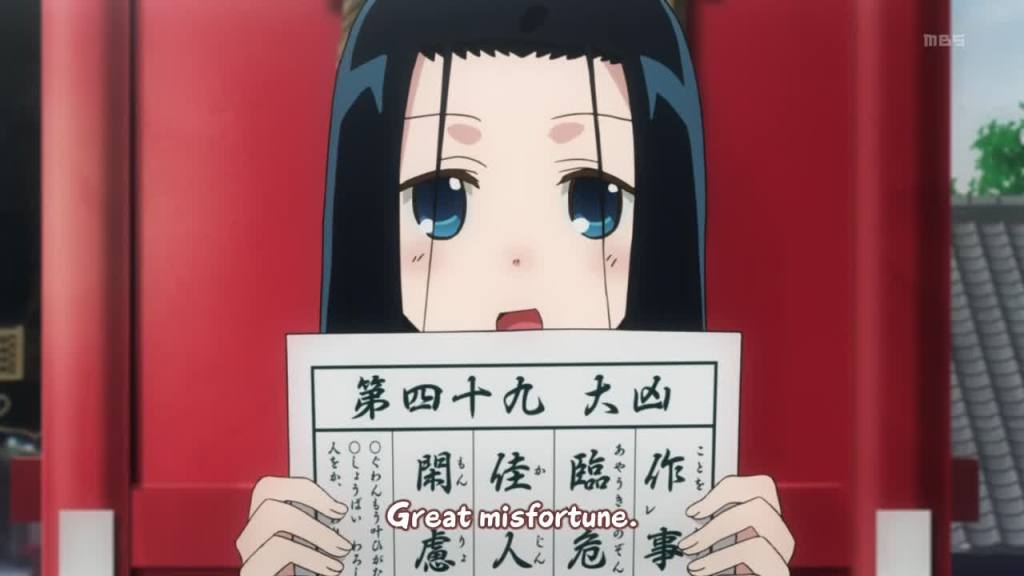
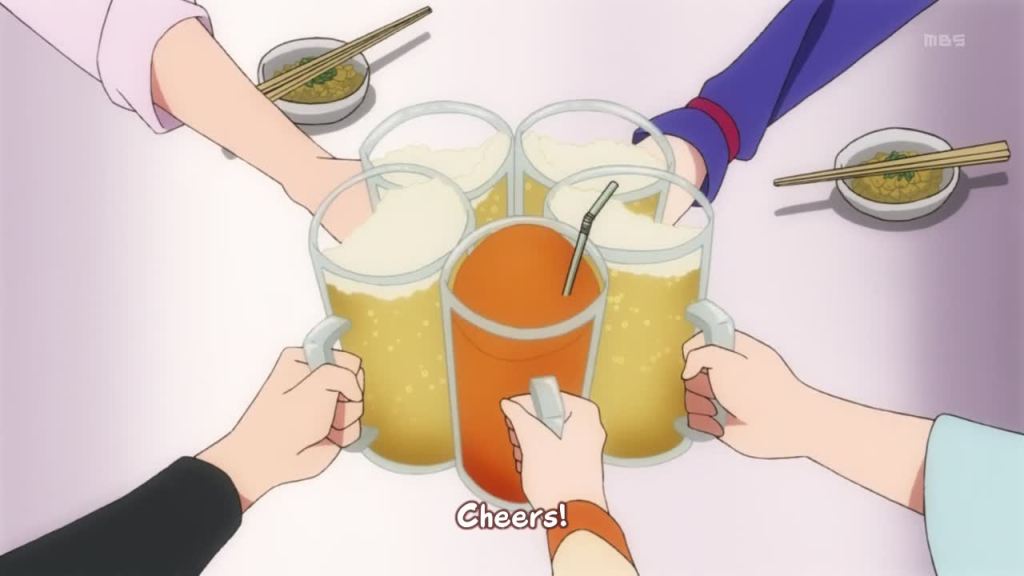
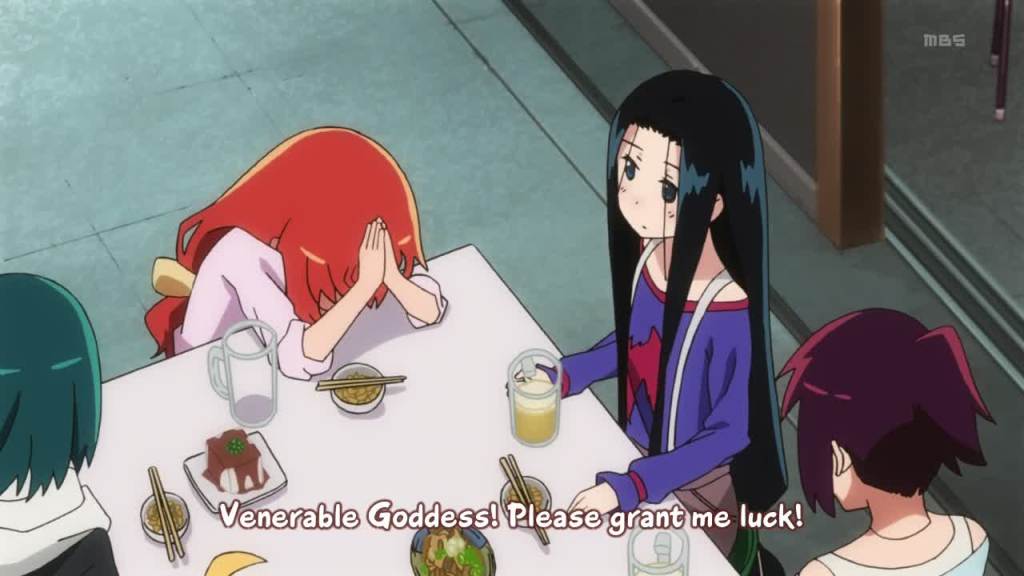

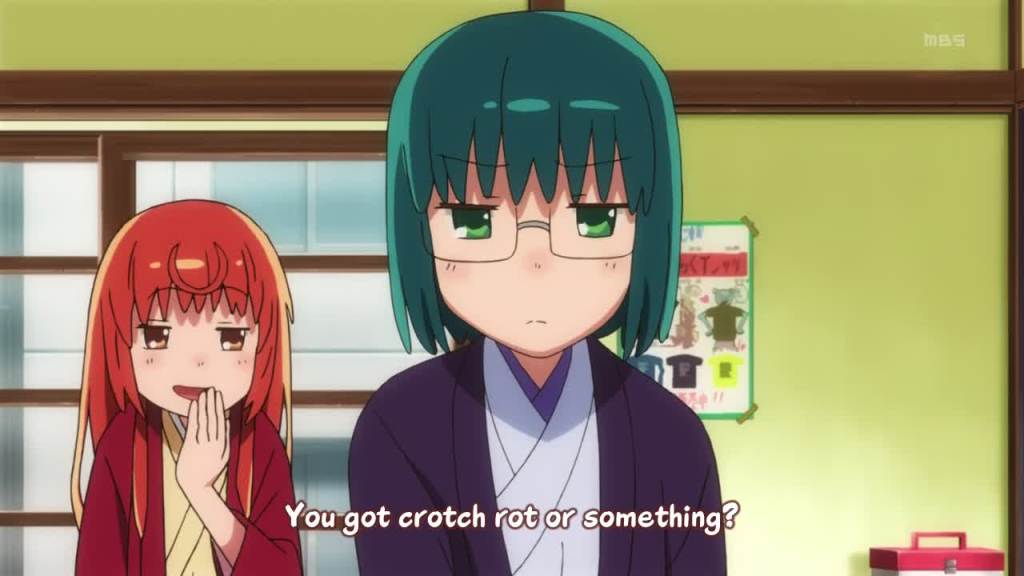

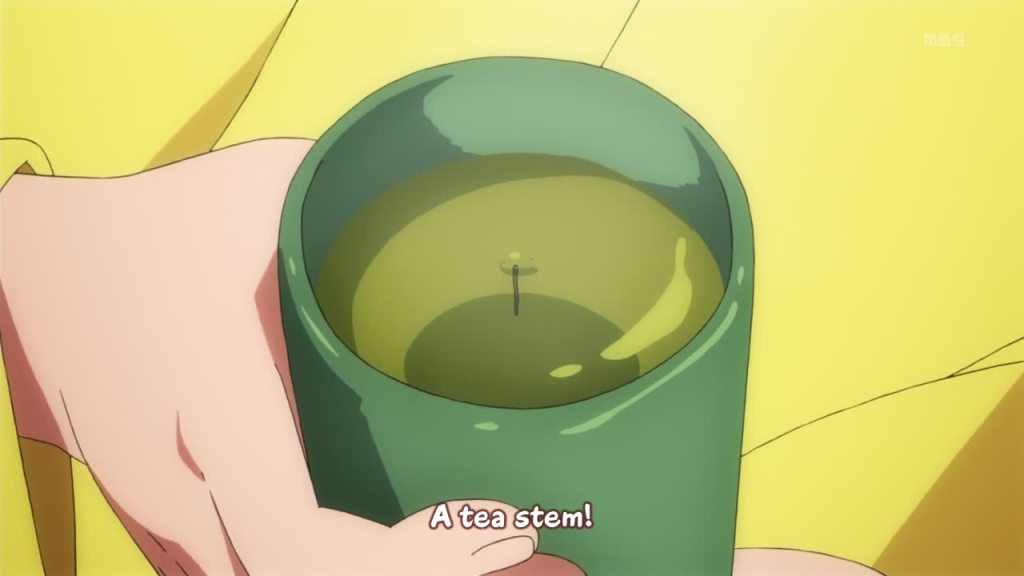
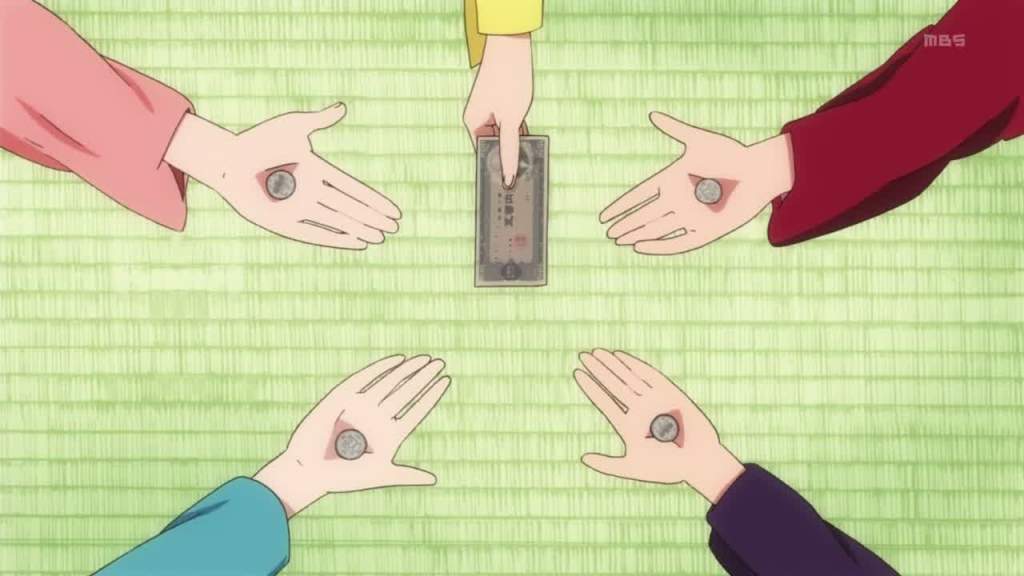

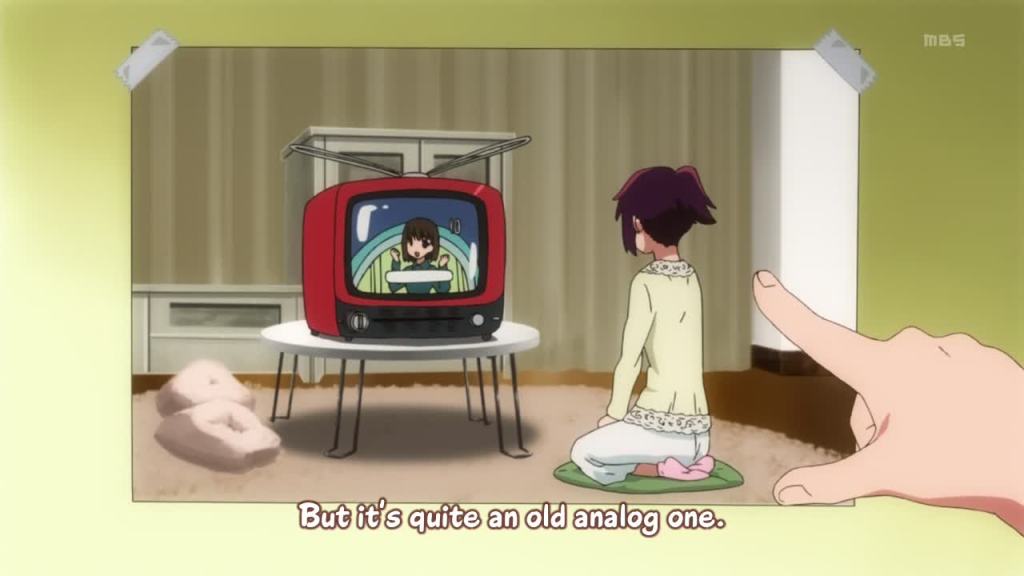

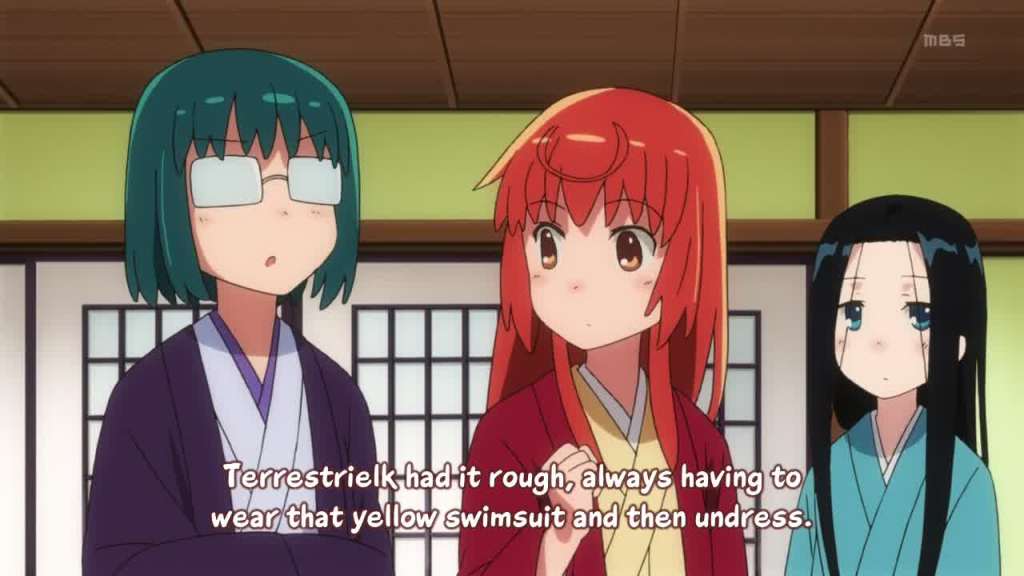
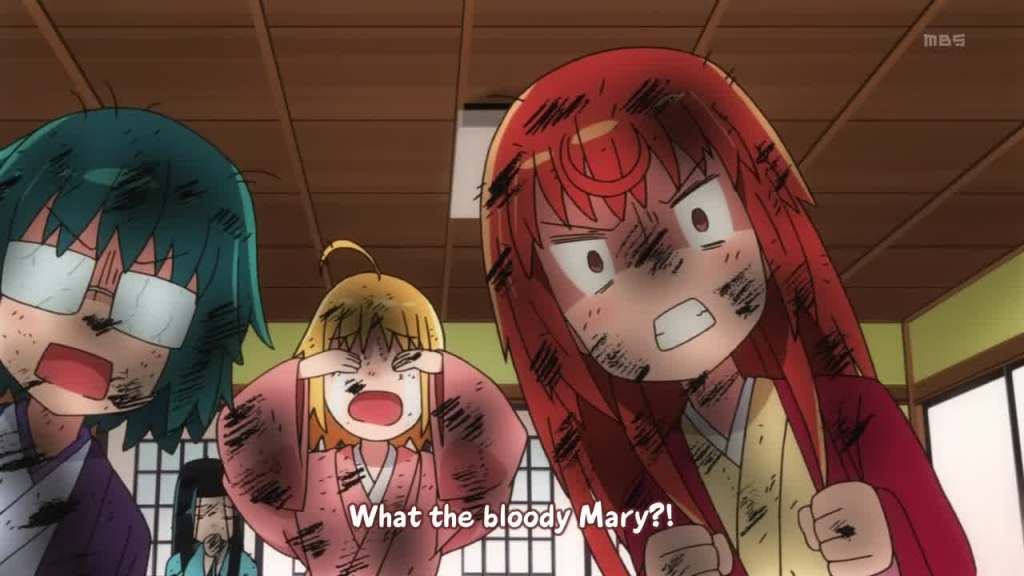
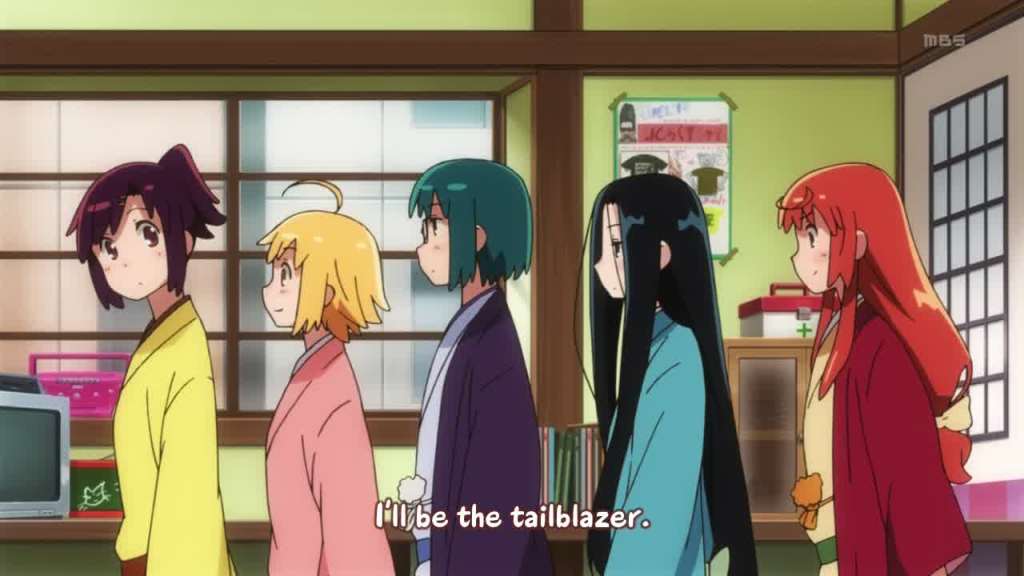
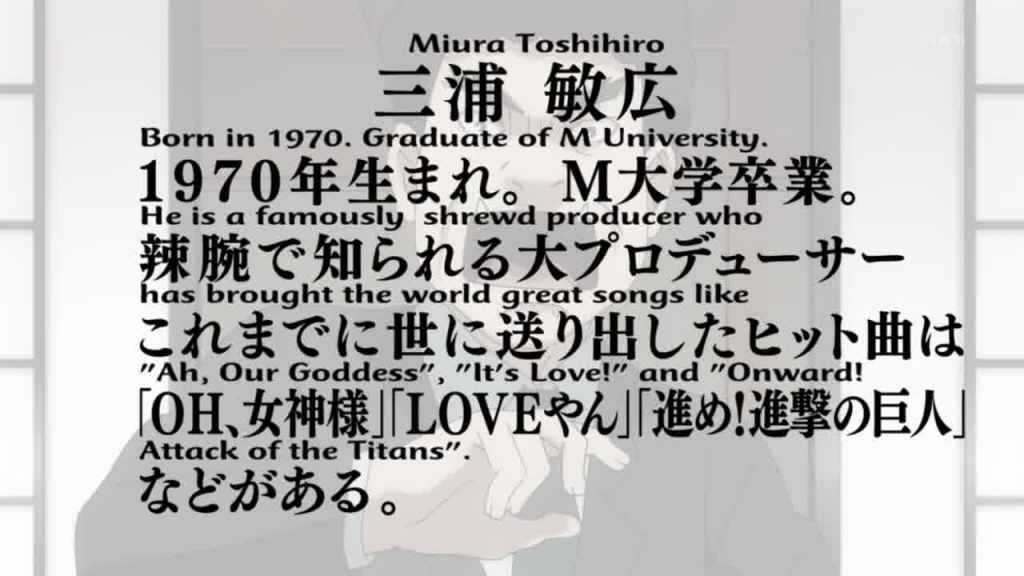
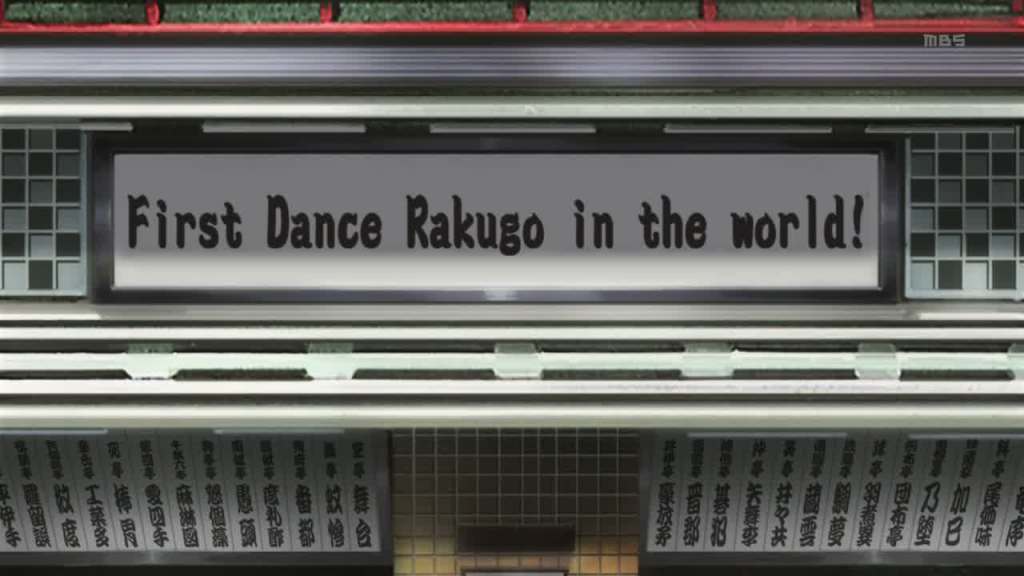
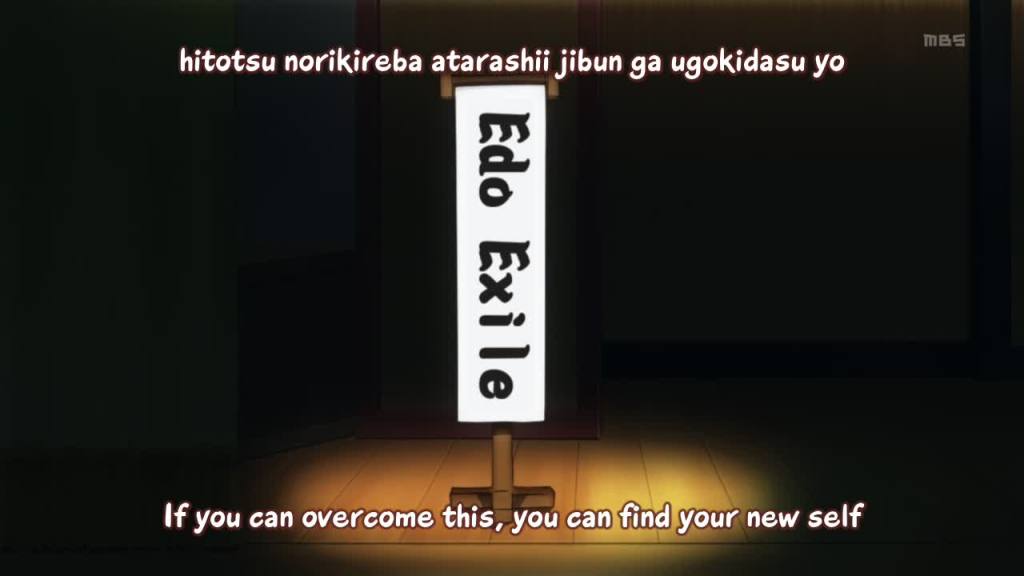
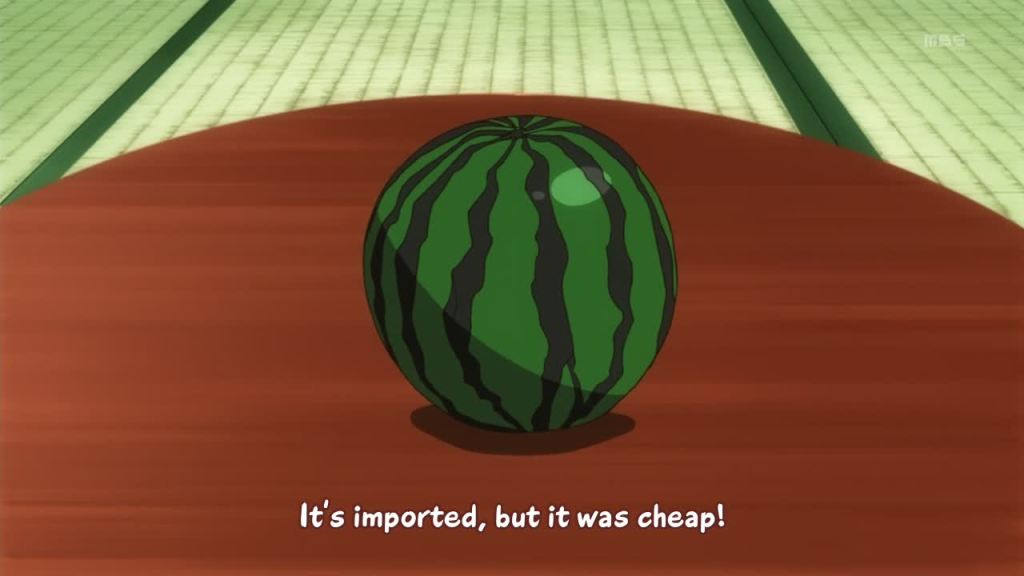
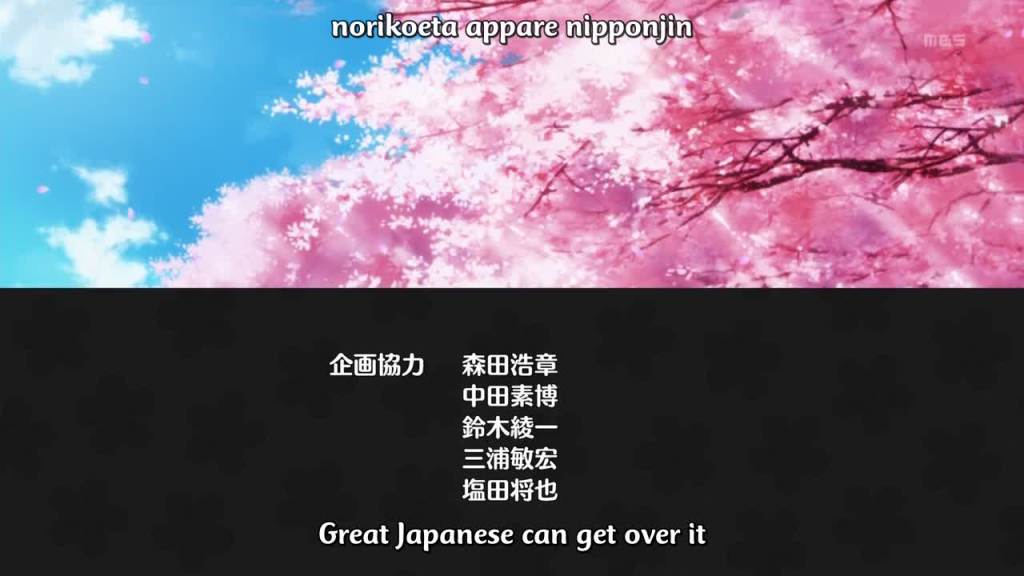
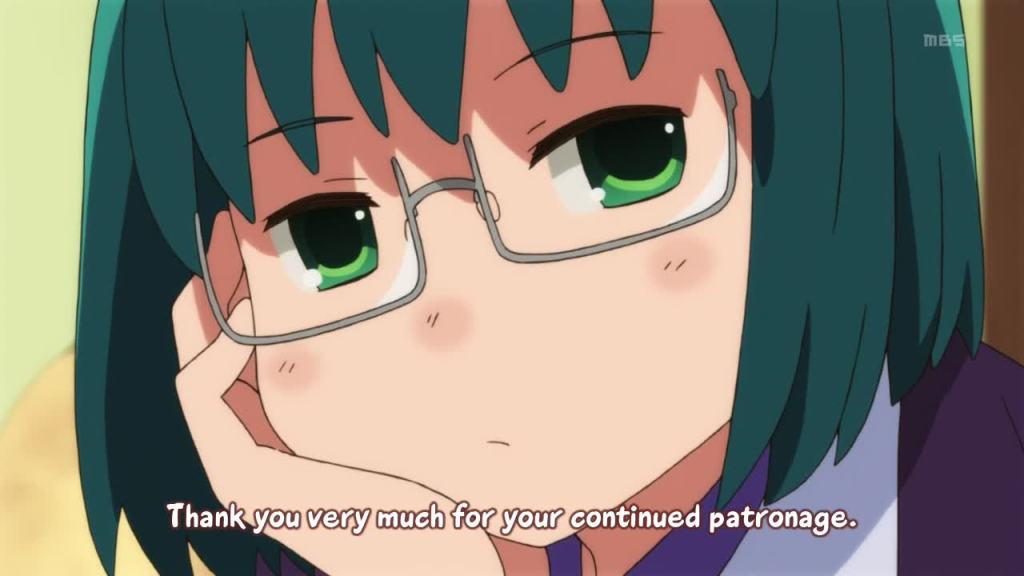
>as it’s Japan, they didn’t get permission to make a flame monument
Care to elaborate on that? I tried by myself but couldn’t find anything relevant. Atomic bomb trauma maybe? Seems a bit far-fetched.
The generally accepted explanation is that it’s somehow regulated in the Construction Law (建築基準法) or that it would’ve blocked the sunshine from some other place. It’s quite certain that the Fire Services Law (消防法) prevented them from painting it red. No official explanation though as far as I know. They might’ve as well just wanted to make a golden shit monument.
Thank you based Vale.
Good luck with your exams.
thank you for this episode
good luck with your exams
The 亭 character shows up in all of the girls names and all the names that showed up in this episode. Is there any reason for that?
It means it’s a stage name / pseudonym. I’m not sure what the origin of that tradition is, though.
>that deer
I remember seeing that little fucker when I watched IS.
Thanks for the notes! They came pretty quick. Good luck on your remaining exams as well.
>笑亭井々共 (warate iitomo): 笑っていいとも, laughing’s good.
It’s also a name of a comedy/variety show on Fuji TV. They had a 27-hour live last week btw.
Didn’t know that one. Thanks.
Thank you for the notes. It was a very interesting read.
Any chance you’d considering helping out on this page? http://joshiraku.wikia.com/wiki/Episode_Guide_(Anime) It’s a new site with few people so far and you do good reviews when it comes to references!
Helping you write the pages is beyond how involved I want to get, but you’re free to use my notes and ask questions. I’ll answer if I can.
>This is a reference to The Rose of Versailles, an old shoujo manga. The main character (Marii’s previous life) is actually a girl, just she was raised as a man. How fitting.
The person who was raised as a man is Oscar (blond). Andre is a man black-haired.
I was under the impression that Oscar was the commander of the Imperial Guard…
Thanks a lot for subbing this, you’re knowledge about Japan is impressive.
* Another performer in episode 2 is called Basutei Ryûjo (馬巣亭 竜序): Basuteiryûjo (バス停留所) means “bus stop”.
* I’ve never heard of a “whirling lake” in Tokushima. The Naruto whirlpools in the Naruto Strait were meant by “うず潮 (uzushio)”. And sudachi aren’t limes, but I guess you were just trying to localize.
* “Sanada Ko-ZOO (真田小ZOO)”, the title of the third story, is a reference to the band ZOO, whose song “Choo Choo Train” was covered by Exile. The video of this very song is parodied by the girls. Compare the OP at around 1:11 (or the breakdance rakugo) with the first few seconds of http://www.youtube.com/watch?v=MsbLjUDBSSM. Like every title in “Joshiraku” this title is also a pun on a rakugo story, namely „Sanada Kozô (真田小僧)“.
* “Edo-zairu” is a mix of “Edo rakugo” (in contrast to Kamigata rakugo in Osaka, Kyoto and vicinity) and “Exile”.
* More about the OP:
– 1:15: Bird’s eye perspective of Shiba-kôen, with the Tokyo Tower, Zôjô-ji, Tokyo Prince Hotel, Prince Park Tower Tokyo, the Atago Green Hills Mori Tower in the back…
– At 1:19 the girls are standing in the slightly altered ukiyo-e “Shore of Tago Bay, Ejiri at Tôkaidô (東海道江尻田子の浦略図, Tôkaidô Ejiri Tago-no-Ura)“, the 18th (according to the English Wikipedia page) picture of Katsushika Hokusai’s (葛飾北斎) “Thirty-six Views of Mount Fuji (富嶽三十六景, Fugaku Sanjûrokkei)“.
* Speaking of Hokusai: The ED starts with a part of the first ukiyo-e of aforementioned work. The curtain shows the (even in the western world) very well known “The Great Wave off Kanagawa (神奈川沖浪裏, Kanagawa Oki Nami Ura)”. I also like the “nipponjin”-part, and the scene where the girls are riding a dashi, a mikoshi and an onbashira.
* Marii (at 3:16): “This is just the standard rough Tokyoite dialect (これはただの江戸っ子のべらんめー調だろ, Kore wa tada no Edokko no beranmêchô da ro)”. Marii means that the other girls are using this dialect (Shitamachi dialect) as well. Because this is the language Edo rakugo is usually performed in. Of course, Marii also uses this dialect off-stage, plus she is from Tokushima. Thus her objection is a little weak.
* It’s not just a 500 yen bill, it is its first version (issued between 1951 and 1971). So yes, it’s super rare.
* Thanks for pointing out the connection with Mr. “裸だったら何が悪い”, Kusanagi Tsuyoshi (not Gou). Although it was mentioned a few times in “Sayonara Zetsubô-sensei”, I totally missed it here.
Thanks for your input, impressive.
You’re welcome.
I forgot “Ryakuzu” (= “Rough Sketch”) at the end of “Tôkaidô Ejiri Tago-no-Ura”. Sorry about that (Never trust Wikipedia too much!).
Hi Vale, I appreciate the time you take to sub the show. I know there’s been blow-back from a few detractors about the time spent to sub this show. I’m now bit of an old man, and know the Japanese culture quite well, sadly, my hearing is not what it use to be and it really requires a lot of effort to hear Japanese and translate in my head these days, so I can appreciate have this series in sub. Looking forward to seeing 4 and now 5 (which just went live on RAW) subbed.
PS, hope you did well on the exams.
>Just watch this episode to get this reference.
I should also note that it may be a reference to the following CM:
http://www.youtube.com/watch?v=DYkjWExq_8I
I have no idea about whether it’s popular enough to be parodied, but I’ve seen at least one parody of it, so who knows.
クリスタン ルブタン